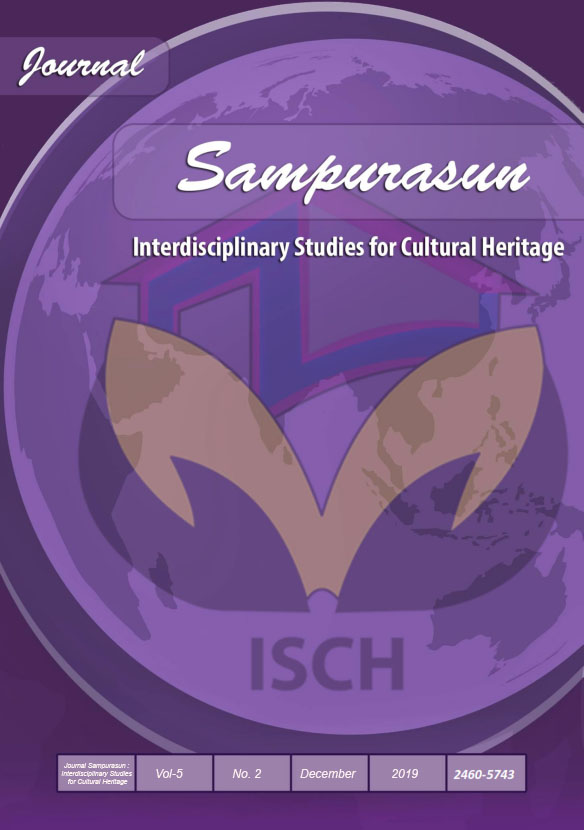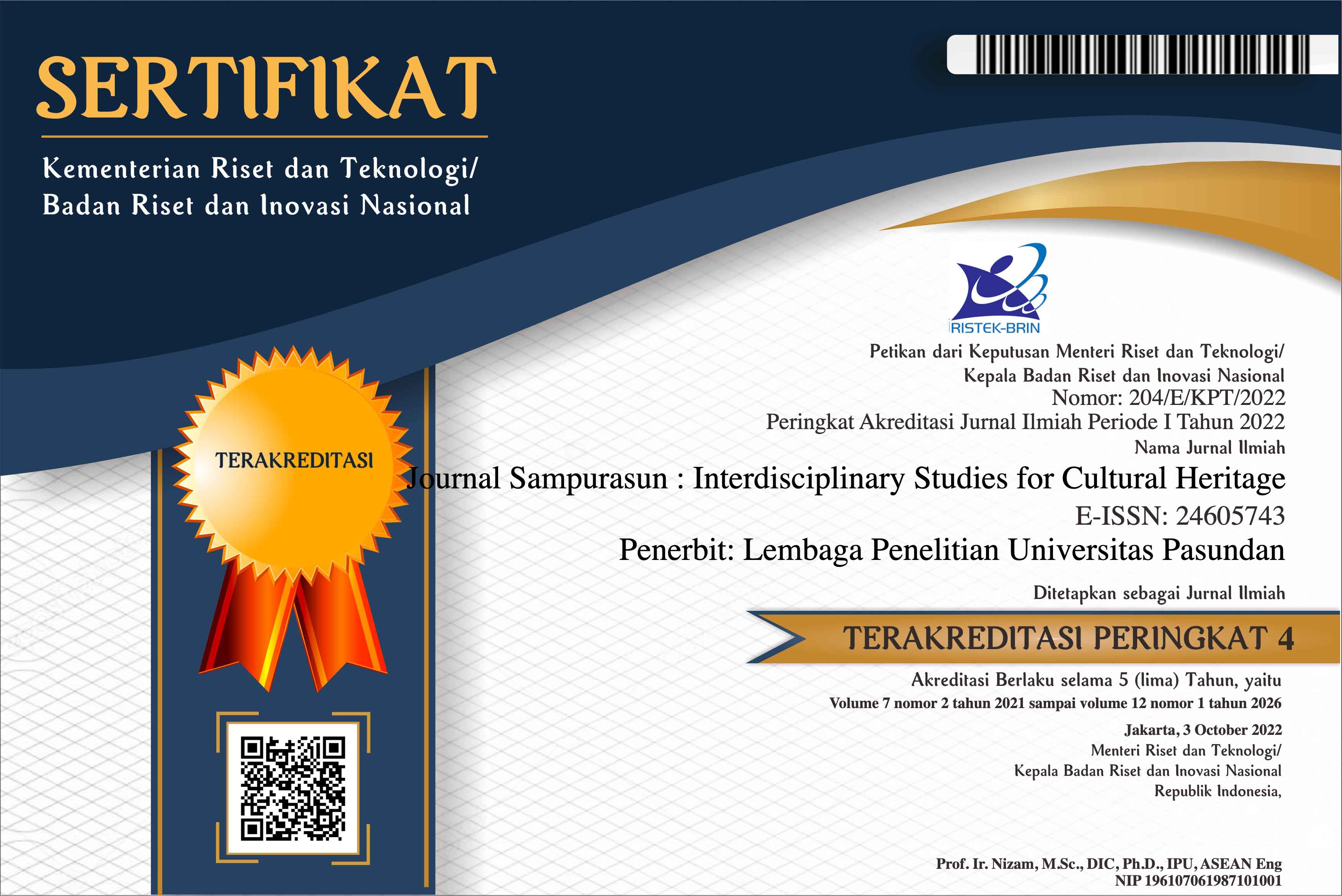THE MARKETING STRATEGIES & IMPROVED OPTIMIZATION OF COMPETENCE OF ENTREPRENEURSHIP: SURVEY OF SMALL AND MEDIUM BUSINESS IN INDONESIA CERAMIC ICONIC PRODUCTS
DOI:
https://doi.org/10.23969/sampurasun.v5i2.1780Keywords:
market strategy, marketing mix strategies, entrepreneurial competence, the competitive advantage of marketing, performance marketingAbstract
This study was conducted to determine the effect of market strategy, marketing mix strategy and entrepreneurial competencies to competitive advantage of marketing and its implications on the performance of ceramic iconic product marketing in West Java. The total sample of 220 respondents, the owners of small and medium-scale ceramic enterprises in West Java. The sampling method used power analysis techniques. Data collected through observation, interviews and surveys using questionnaires instrument closed and open. The analytical method used is Structural Equation Model.
The results found that the influence of the entire independent variables significantly influence the intervening variable, and the effect of intervening variables significantly influence the independent variable. The amount of direct influence on competitive advantage strategy marketing market by 3.8%, the magnitude of the direct influence of marketing mix strategy on competitive advantage of marketing at 11.5%, the magnitude of the direct influence of entrepreneurial competencies to competitive advantage of marketing by 15.6%. The magnitude of the direct effect of the competitive advantage of marketing to marketing performance by 9.1%. Sequentially important variable is the competence of entrepreneurship, marketing mix strategy, market strategy, marketing competitive advantage.
Marketing competitive advantage is influenced by market strategy, marketing mix strategy and entrepreneurial competence by 65%, while the remaining 35% are influenced by other factors (ceteris paribus). To 5 hypothesis proposed in this study were all found
Downloads
References
Ali, Muhammad. Muhammad Ilyas., Chaudhary Abdul Rehman. (2016). Impact of consumer centric marketing mix elements on consumer buying behavior: an empirical investigation in the context of the FMCG industry on Pakistan. Quwait chapter of Arabian Journal of Business and management review, 5 (5).
Ana Maria Garcia, Perez, Vanessa, Yanes, Estevez., Juan Ramon, Oreja, Rodriguez. (2014). Strategic positioning and strategic types of small firms. Journal of Small Business and Enterprise Development, 21 (3), 431-449.
Annetta, Gunawan., Raymond, Glean, Brian, Garda, Muchardie. (2016). Analysis of Millennial Moms Segmentation and Perceptual Mapping of Infant Formula Milk Market in Jakarta. Inktomi Business Review, 7 (3), 255-260.
Baker, Michael J. (2014). Marketing strategy and management. New York. Palgrave MacMillan Education.
Blanchard, Pierre., Carl Gaigne., Claude Mathiew. (2012). Trade costs and the international strategy of the firm: The role of endogenous product differentiation. Regional Science and Urban Economics, 42, 1023-1036.
Ferdinand, Augusty, Tae., Fitriany, Lili, Karmela. (2015). Acculturative iconic product attractiveness and marketing performance. Journal of Global Strategic Management, 9 (2), 15-23.
FITRIANI, Lili, Karmela. (2013). Effect of entrepreneurial orientation and market orientation towards product innovation and its impact on the competitive advantage of the product (research on SMEs Batik Cirebon). National Conference on Management Research VII Palembang, 2086-0390.
Gina, Suendro. (2010). Analysis of the influence of product innovation through marketing performance to achieve sustainable competitive advantage (Case studies on small and medium industries Batik Pekalongan). Diponegoro University Graduate Program.
Ghozali, Imam. (2011). Structural Equation Modeling: Concepts and Applications with AMOS 22.0, Update Bayesian SEM. Semarang: Diponegoro University Publishers Agency.
Haapanen, Lauri., Pia, Hurmelinna, Laukkanen., Jan, Hermes. (2018). Firm Functions and the nature of competitive advantage in internationalizing SMEs. International Journal of Innovation Management, 22 (3).
Henrik, Gert, Larsen. (2015). A Hypothesis of the dimensional organization of the city constructs a starting point for city brand positioning. Journal of Destination Marketing and Management 4, 13-23.
Kevin, Wongleedee. (2015). Marketing Mix and purchasing behavior for community products at traditional markets. Procedia: Social science end behavior.
Kotler, Philip and Armstrong, G. (2016). Principles of Marketing. New Jersey: Prentice Hall.
Kotler, Philip., & Keller, Kevin Lane. (2016). A Framework for Marketing Management. London: Pearson Education Limited.
Lydia, Apriliani., Augusty, Tae, Ferdinand. (2015). Factors that influence the competitive advantage in an effort to increase market share. Diponegoro Journal of Management, 4 (3), 2337-3792.
Lupiyoadi, Creep. (2014) Marketing Services. Jakarta. Salemba Four.
Munaf, Triawan. (2017). Survey Results Statistical Data and Creative Economy: Creative Economy Cooperation Agency and the Central Bureau of Statistics. BPS.
Munandar, Dada. (2011). Analysis of the determination of the segment, targeting and positioning market homecare hospital Al-Islam Bandung. Scientific magazine UNIKOM, Bandung.
Musthopa, Budiman, Mahmud. (2017). Transformation of Small and Medium Enterprises Based Art Creativity Tradition: A Case Study of Saung Angklung Udjo in Bandung, West Java. Sosiohumanika, 10 (1), 57-70.
Muzakar, Isa. (2011). Competence Analysis of Entrepreneurship, Entrepreneurship Orientation and Performance furniture industry. Lppmums, 15 (2).
Nugroho, R., Japarianto, E. (2013). Influence people, physical evidence, product, promotion, price and place of the traffic in a cafe coffee cozies Surabaya. Petra Marketing Management Journal, 1 (2), 1-9.
Owomoyela, Ola., Oyeniyi. (2013). Investigating the impact of marketing mix elements on consumer loyalty: An empirical study on Nigerian Breweries Plc. Interdiciplinary Journal of Contemporary Research in Business.
Porter, ME (2011). The competitive advantage of nations: creating and sustaining superior performance (Vol. 2). Simon and Schuster.
Pratomo, MRT., Widiyanto, I. (2015). Analysis of the influence of entrepreneurial competence and the ability to sense market on competitive advantage to improve performance marketing (SME case study in the city of Semarang. Doctoral dissertation, Faculty of Economics and Business.
Rahmayanti, Rima. (2018). Target market and marketing mix in creating customer value as well as its implications on customer loyalty (a study of customer Tea Bags Walini in Bandung Metropolitan). Pasundan University, Institutional repositoris and scientific journals.
Sabran, Bob. (2016). Marketing Management. Jakarta. Erland.
Shank, MD, Lyberger, MR (2014). Promotion mix elements. In Sports Marketing, 407-463.
Shu-Hao Chang., Chia-Ho Chen, Yu Ching Ho. (2012). A Study of Marketing Performance Evaluation System for Notebook Distribution. International Journal of Business and Management, 7 (13), 1833-3850.
Sugiyono. (2018). Management Research Methods. Yogyakarta. Alfabeta.
Sya'roni., Deden, Abdul Wahab., Sudirham, J. J, (2012). Creativity and Innovation Competence Determinants Small business communities. Journal of Technology Management, 11 (01).
Ting, Low, Sheau., Abdul Hakim, Mohammed., Choong, Weng, Wai. (2013). What is the optimum mix of social marketing to market energy conservation behavior: An empirical study. Journal of environmental management, 13 (1), 196-205.
UPTD Research. (2010). Decorative Ceramic Techniques Guide. Plered. UPTD Research.
Utomo, H. (2015). Growing interest in social entrepreneurship. Among Makarti Scientific Journal, 7 (14).
Wang Chao, Hung. (2014). How relational capital mediates the effect of corporate reputation on competitive advantage: Evidence from Taiwan's high-tech industry. Technological Forecasting & Social Change, 82 (2014), 167-176.
Regulation of the Minister of Industry of the Republic of Indonesia Number: 135 / M-IND / PER / 10/2009 concerning a guide map (road map) industry cluster development pottery and decorative ceramics.
Indonesian Banking Development Institute and Bank Indonesia, 2015, the Business Profile for Micro, Small and Medium Enterprises (SMEs).
Regulatory region of West Java Province No. 10 of 2010 on SMEs.
Indonesian Presidential Regulation No. 6 of 2015 concerning improvement of the creative economy through BEKRAF (Creative Economy Agency).
Presidential Decree No. 75 2015 about the creative economy.
SK Ministry of Industry 01 / M-Ind / PER / 1/2016 on the application of SNI.
Indonesian Government Regulation No. 17 of 2013 on government support for innovative and creative businesses.
UPTD (Regional Technical Implementation Unit) Research & Development, Ministry of Industry and Trade.
Downloads
Published
Issue
Section
License
Copyright Notice
Authors should not withdraw their submitted papers because the withdrawal wastes voluntary works devoted by an associate editor and reviewers. But, we accept the withdrawal of a submitted paper if authors have unavoidable reasons. In the event that a manuscript is to be withdrawn from submission to Sampurasun Journal, a letter must be sent to the editorial office requesting withdrawal by e-mail (sampurasunjournal@unpas.ac.id) with its scanned PDF file, before the notification of acceptance for publication.
The withdraw request letter must include the following information. Paper ID, Paper title, Authors names, Reason why the paper must be withdrawn, and Date and signatures of all the authors (or signature of the contact author).
If only the contact author signs the letter, he/she must obtain the agreement of the withdrawal from all the other authors and the letter must include the description that all the other authors agreed the withdrawal. The journal will not withdraw a manuscript from peer review until such a letter has been received. Authors must not assume their manuscript has been withdrawn until they have received appropriate notification from the editorial office. Withdrawal of a manuscript subsequent to acceptance for publication will only be granted in the most exceptional of circumstances.
After the paper is accepted for publication, the withdrawal is not permitted in principle. The authors must always pay the charge even if the withdrawal is permitted. Any request of withdrawal that does not follow the above procedure is treated as invalid. If illegal submission, e.g., plagiarized or duplicate submission, is found for a paper, the withdrawal of the paper will never be permitted and the authors will be punished based on the rule. It is not acceptable practice to withdraw a manuscript in the event of acceptance at another journal. This constitutes dual submission. The editorial office of the other journal will be notified of your actions. In such circumstances Sampurasun ISCH may chose to impose appropriate punitive action subject.
Withdrawal Penalty
Author is not allowed to withdraw submitted manuscripts, because the withdrawal is waste of valuable resources that editors and referees spent a great deal of time processing submitted manuscript, money and works invested by the publisher. If author still requests withdrawal of his/her manuscript when the manuscript is still in the peer-reviewing process, author will be punished with paying $200 per manuscript, as withdrawal penalty to the publisher. However, it is unethical to withdraw a submitted manuscript from one journal if accepted by another journal. The withdrawal of manuscript after the manuscript is accepted for publication, author will be punished by paying US$500 per manuscript. Withdrawal of manuscript is only allowed after withdrawal penalty has been fully paid to the Publisher. If author don't agree to pay the penalty, the author and his/her affiliation will be blacklisted for publication in this journal. Even, his/her previously published articles will be removed from our online system.


















